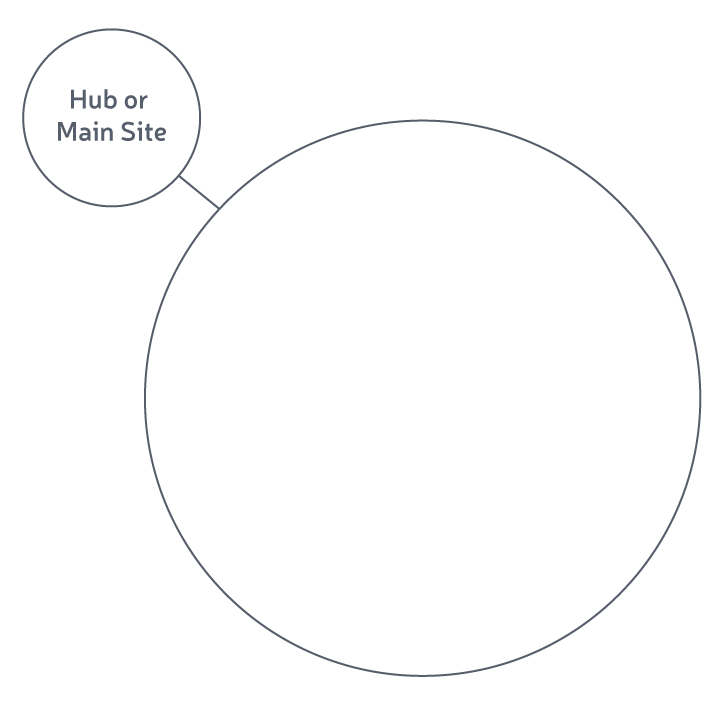Mothership Project
Essentially, the Mothership Project is a high-level LMS that doubles as a central course catalog. Multiple second-level LMS iterations (for each client/sub-site) are tied to this top-level LMS (i.e., the Mothership). Then via common cartridge imports/exports, the Mothership LMS exports course cartridges into each second-level LMS (client/subsite). This capability provides clients with a central course catalog through which they can easily distribute and manage content and associated Learning Outcomes across their multiple clients/sub-sites. Each sub-site has their own unique LMS site–their own brand/ logo, etc. There would be no difference for the administrators or users at these second-level learning management system sites. The course content is simply controlled at the top level and then synced up with the second-level learning management system sites for each client/sub-site.
 Dashboard
Dashboard
Mothership LMS
Secondary LMS
Independent of all other clients
(separate DB, Users, and Content)
Secondary LMS
This Mothership functionality may be particularly relevant to businesses, programs, or companies that have the need to report on and manage Learning Outcomes/Objectives, provide accountability in the form of reports and course management, and other administrative functions. These entities would seemingly significantly benefit from a customized solution that had a network comprised of several learning management systems, rather than just one learning management system on which all clients are served. The flexibility provided with the Mothership solution enables you to tailor each LMS to its local context.
Mothership Process
- Course Created in Client/Sub-site Account
- Course shows in SuperAdmin Dashboard. Browse-able by selecting a Client/Sub-site, then listing courses after selecting the Term
- SuperAdmin selects Bundles or Courses* and pushes to Client sub-site. If client sub-site already has the course, the # of licenses are added to any existing licenses they have
- Nested ‘Bundles’ can be created. Courses may be added to any bundle
- Cart is created in the background and imported to the Dashboard Cart Repository. Course is listed in the Dashboard by Category, with a hidden relation to the cart
- Client administrator can now see the course(s). They can assign a course to any facilitator by selecting a Term and then a facilitator
- In the background, the original Cart in the Dashboard repository is unpacked and the course is created. Course setup is complete
- Each time a user is enrolled in a course, it subtracts from the purchased licenses
